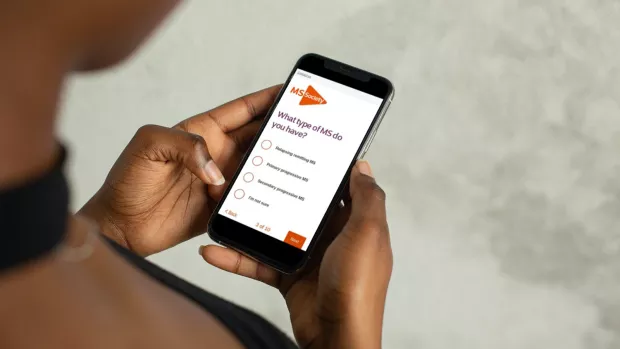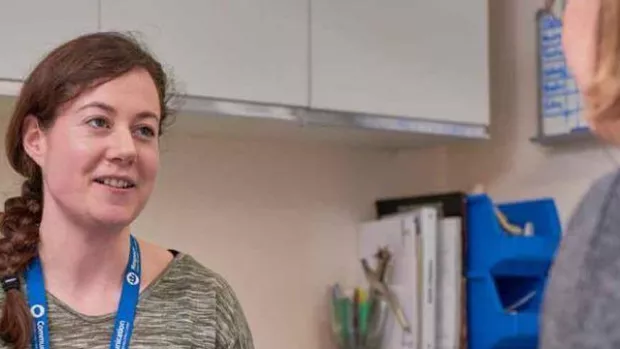
Fingolimod (Gilenya)
Fingolimod is a disease modifying therapy (DMT) for 'highly active' relapsing MS. Its brand name is Gilenya and you take it as a tablet.
Read the latest information about DMTs and coronavirus COVID-19
- Who can take fingolimod (Gilenya)?
- How does fingolimod (Gilenya) work?
- How well does fingolimod (Gilenya) work?
- What are the side effects of fingolimod (Gilenya)?
- Fingolimod (Gilenya) and pregnancy, breastfeeding and contraception
Who can take fingolimod (Gilenya)?
In Scotland and Wales you can have fingolimod (Gilenya) if:
- you have highly active relapsing remitting MS and another DMT hasn’t worked for you or
- you’ve had two or more disabling relapses in one year and an MRI scan shows you’re getting more lesions
In England and Northern Ireland you can have it if:
•you have the same or an increased number of relapses despite treatment with beta interferons (Avonex, Rebif, Betaferon, Extavia and Plegridy), glatiramer acetate (Copaxone), dimethyl fumarate (Tecfidera) or teriflunomide (Aubagio).
Across the UK:
You might be switched to fingolimod if you’re taking natalizumab (Tysabri) and are at high risk of developing the brain infection PML.
Fingolimod can also be used as your first DMT if you have highly active relapsing MS or rapidly evolving severe relapsing remitting MS.
How does fingolimod (Gilenya) work?
Special types of cells in your immune system, called T and B cells, are thought to cause a lot of the damage in MS. They normally kill viruses and bacteria that get into your body but in MS they damage your nerves. Fingolimod (Gilenya) stops them leaving your lymph nodes where they're made. This means fewer of them get into your brain and spinal cord where they would attack the covering around your nerves (called myelin).
Fingolimod is a tablet you take once a day.
How well does fingolimod (Gilenya) work?
MS drugs can be put into three groups based on how well they control it. The effectiveness of fingolimod (Gilenya) is classed as 'good'. This puts it between the DMTs classed as 'high' effectiveness and those classed as 'moderate'. This is based on how much it reduces relapses and slows down how fast people's disability gets worse.
Relapses dropped by: 54%
This means that in a trial, on average, people saw a 54% drop in the number of relapses they had. This was compared to people who took a placebo, a dummy treatment with no drug in it.
Disability getting worse was slowed down by: 30%
This means that in a trial, on average, people saw a 30% drop in the risk of their disability getting worse. This was compared to people who took a placebo.
What are the side effects of fingolimod (Gilenya)?
Compared to other DMTs the risk of side effects, especially serious ones, is somewhere in the middle.
More than one in 10 people get diarrhoea, back pain, headache, cough, tiredness, or have more chance of getting infections like flu.
When you take your first dose of fingolimod (Gilenya) it can cause your heart to slow down or its beat becomes irregular. Because of this you're given your first dose of fingolimod in hospital and monitored for at least six hours after taking it to check for any problems. Your heart soon goes back to normal.
PML: a very rare side effect
Fingolimod is used by people who are switched from another drug, natalizumab, because they're at risk of getting a rare viral brain infection called progressive multifocal leukoencephalopathy (PML). There's also an extremely small risk of PML when you take fingolimod because it makes your immune system work less well. PML can be fatal or leave you seriously disabled but the risk of getting it while on fingolimod is extremely small. As of August 2017, 15 people around the world had definitely or probably got PML from taking fingolimod. This works out as a risk of less than one in 10,000.
There's a virus that makes your risk of getting PML higher. Your specialist can tell from a blood test if you have this virus. If you do, your MS team will talk to you about PML and what you can do about it.
Fingolimod (Gilenya) and pregnancy, breastfeeding and contraception
Pregnancy
Fingolimod (Gilenya) can harm unborn babies. You must avoid getting pregnant while on this drug and, if you stop taking it, for two months afterwards.
If you do become pregnant, your neurologist will take you off this drug. They might suggest you switch to another DMT during your pregnancy.
If you stop taking fingolimod (for example, to have a baby), you need to keep using contraception for two months afterwards. Two months is this drug’s ‘washout period’. That’s how long it takes for levels of it in your body to reach a level where it’s safe to get pregnant.
If you and your partner want to have a child, discuss this with your neurologist. If you think you’ve become pregnant, let your medical team know at once. Never stop your DMT without first getting their advice.
Breastfeeding
Fingolimod (Gilenya) might pass into breast milk. So you shouldn’t feed your baby this way while taking this drug, and for two months after you stop taking it.
Contraception
If you can get pregnant, you must use reliable contraception while on fingolimod (Gilenya) such as condoms, the ‘pill’, an implant or IUD.





